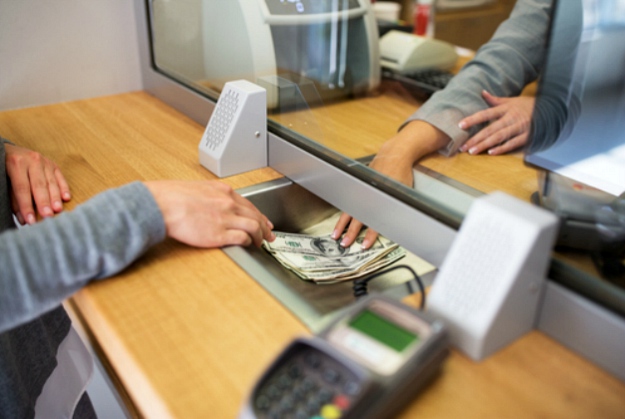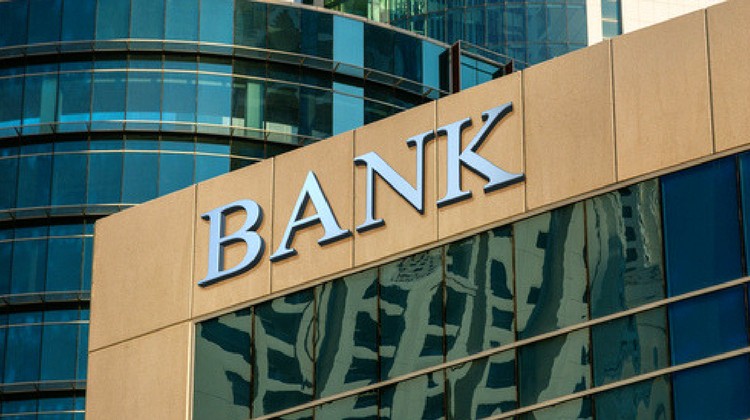Being able to choose a bank that’s right for you can be the difference between having a financial ally or adversary.
The right bank will provide you sound security, ease of use, and access to credit.
Choose A Bank: The Right One For Your Peace Of Mind
A poor banking relationship will amount in overdraft fees, frustration, and possibly bad credit.
By using the points in this article you’ll have a better understanding of what a “good bank” looks like and what you should expect from your relationship.
1. Annual Fees

Most banks make their money by lending money to others.
Banks are legally allowed to lend 10 times the amount of money they have on deposit.
That’s one of the reasons why many banks will require you to have an average monthly deposit in order to avoid paying a monthly or annual fee.
Be sure to ask your banker what the monthly deposit requirement is and how that amount is calculated.
When you’re asking about fees you’ll also want to know how much it is to transfer funds to other accounts or people.
While services like Venmo offer excellent convenience, it’s great to be able to transfer directly from your account with the security of your institution behind you.
2. Overdraft Fees
Overdraft fees can be charged when the purchases from your account exceed the amount of money in your bank or credit union accounts.
Customers not only pay for the overdraft fee itself, but also could end up paying additional fees for maintaining a zero balance in their account for a certain amount of time.
With overdraft fees at the biggest U.S. banks averaging $30, overdraft fees can rapidly and effectively drain the money in your account.
Previously, cardholders got overdraft “protection” by default, until 2010 when federal regulations mandated that financial companies give consumers the choice to opt-in before implementing an overdraft charge.
It’s not always easy to understand overdraft fees.
When a transaction drops your checking account balance below zero, what happens next is up to your bank.
However, another alternative offered by the bank is the Overdraft Protection which is a common bank service that links a checking account with a line of credit, savings account, credit card, or second checking account.
Bank of America states, “The service gives you more flexibility to make purchases when you don’t have enough money in your checking account at the time of the transaction.”
This convenience may sound like a luxury, but you’ll still need to be sure to keep enough funds in your linked account.
Overdraft Protection helps prevent declined transactions, returned checks or other overdrafts on your accounts.
This service automatically transfers your own funds between linked bank accounts to cover overdrafts, charging an overdraft transfer fee of $10-$12.
Yes, while it is your money in your account, the bank has to take their cut in order to transfer the funds.
Look at the bright side: a $12 transfer fee is a lot less than a $30 overdraft fee.
3. Access to other services

Financial institutions (including banks and credit unions) may vary in the type and number of services they provide clients, however huge numbers of their “core” services are the same.
The services frequently provided incorporate an assortment of financial records, saving accounts, certificates of deposit, and loans, including car loans and home mortgages.
Additional services may include safe deposit boxes and investment-related services.
Check with local financial institutions in your community for particular details about their products and services.
Accounts
Everyone is familiar with checking and saving accounts which are used to build pay bills and build emergency funds but there are other types of accounts as well.
Loans
Banks make money by taking demand deposits for different types of accounts and then using that money to extend loans to consumers.
This has been a business model in existence for the entirety of every financial system in history.
Cards
Initially, automated teller machine cards allowed consumers to access their funds outside of normal banking hours.
As networks were created and retailers became more comfortable with electronic forms of payment additional types of cards were created.
Online Banking
A fundamental change in the banking relationship between financial institutions and consumers is directly tied to advancements on the Internet.
Online banking allows consumers to conduct almost all business necessary from making wire transfers to paying bills online.
Be sure to check the bank’s app to make sure that you’re comfortable with it and it’s usability.
Investments
Typical banking functions like extending a mortgage loan and transferring money between accounts will only get banks so far in terms of revenue and staying competitive.
That’s why many offer investment services ranging from a CD to full money management.
Merchant Services
All information thus far has focused on business to consumer services such as opening a savings account or requesting a credit card but businesses require many of the same services.
You’ll want a merchant account for accepting payments in your store or online.
4. Reputation
Your banking relationship should be a major piece of your financial life and you need to have the capacity to trust your bank completely with your money.
It’s essential to search for banks that are transparent with how they profit and how they function to serve their clients.
A few major banks in recent history have been under fire for slimy or fraudulent sales tactics, so be sure to do a bit of research on the bank’s history, reputation and business model.
The 2017 survey uncovered that the banking industry overall extended its multiyear reputation recovery among U.S. consumers, achieving a reputation score that qualified as “strong” (above 70 on a 100-point scale) for the first time since the Survey of Bank Reputations began in 2011.
Better delivery of products and services has helped, as has looser lending practices. But the greatest impact has been banks’ behavior.
Banks are supposed to be a safe place for your money.
Ensure that any account you use is insured, preferably by the US Government:
- Banks should be backed by FDIC insurance
- Federally insured credit unions should be backed by the NCUSIF
- If a bank or credit union fails, you should not lose any money as long as your deposits are below the maximum limits (currently $250,000 per depositor per institution, and it’s possible to have more than $250,000 of “your” money covered at a bank).
Great Lake’s video gives us five questions that you need to ask when choosing a bank:
As you can see, there are many aspects to your banking relationship, however finding the right match is well worth your time and peace of mind.
Check with different options to suit your lifestyle and beliefs.
Have you been with a bank for over 10 years? What has kept you there so long?

